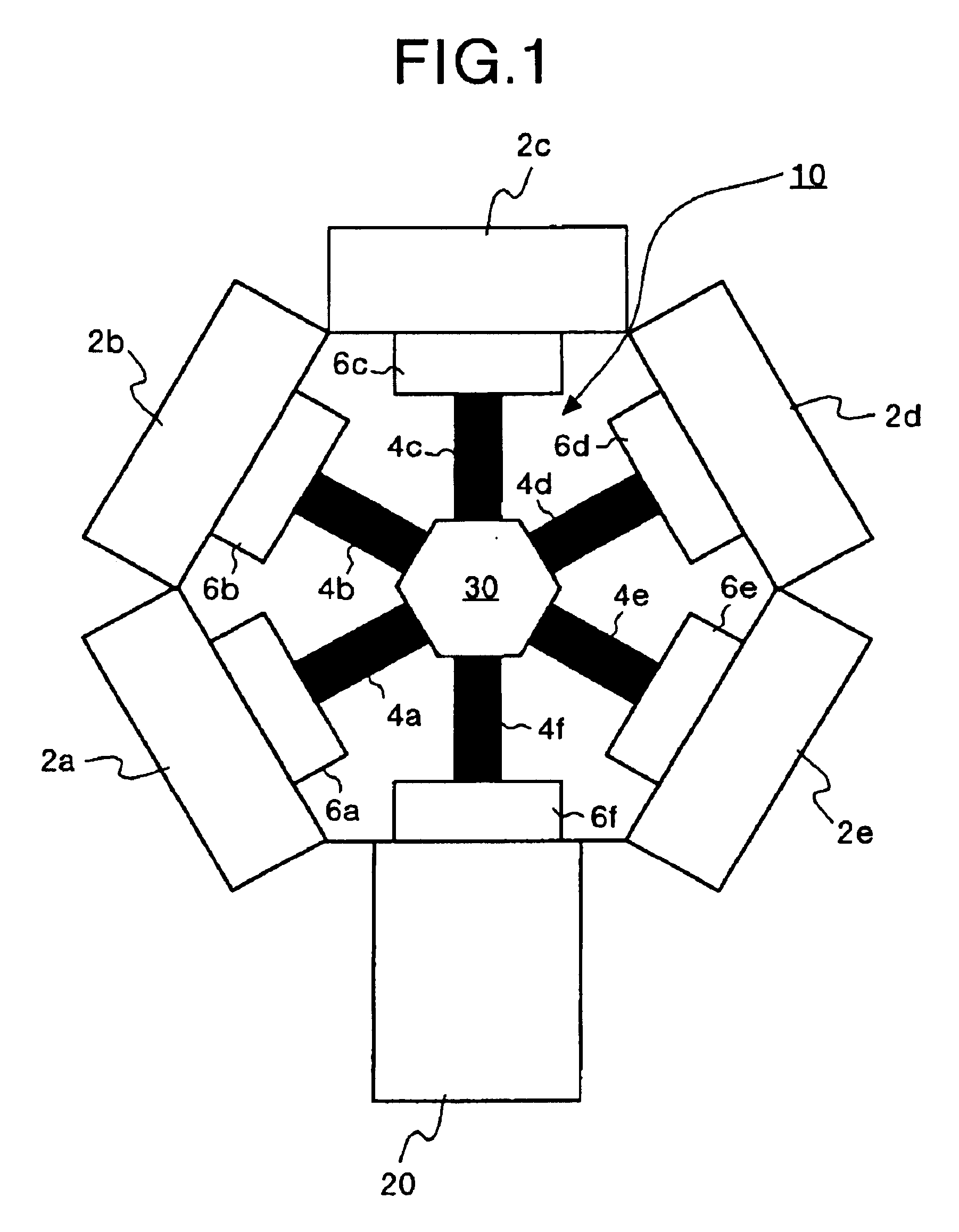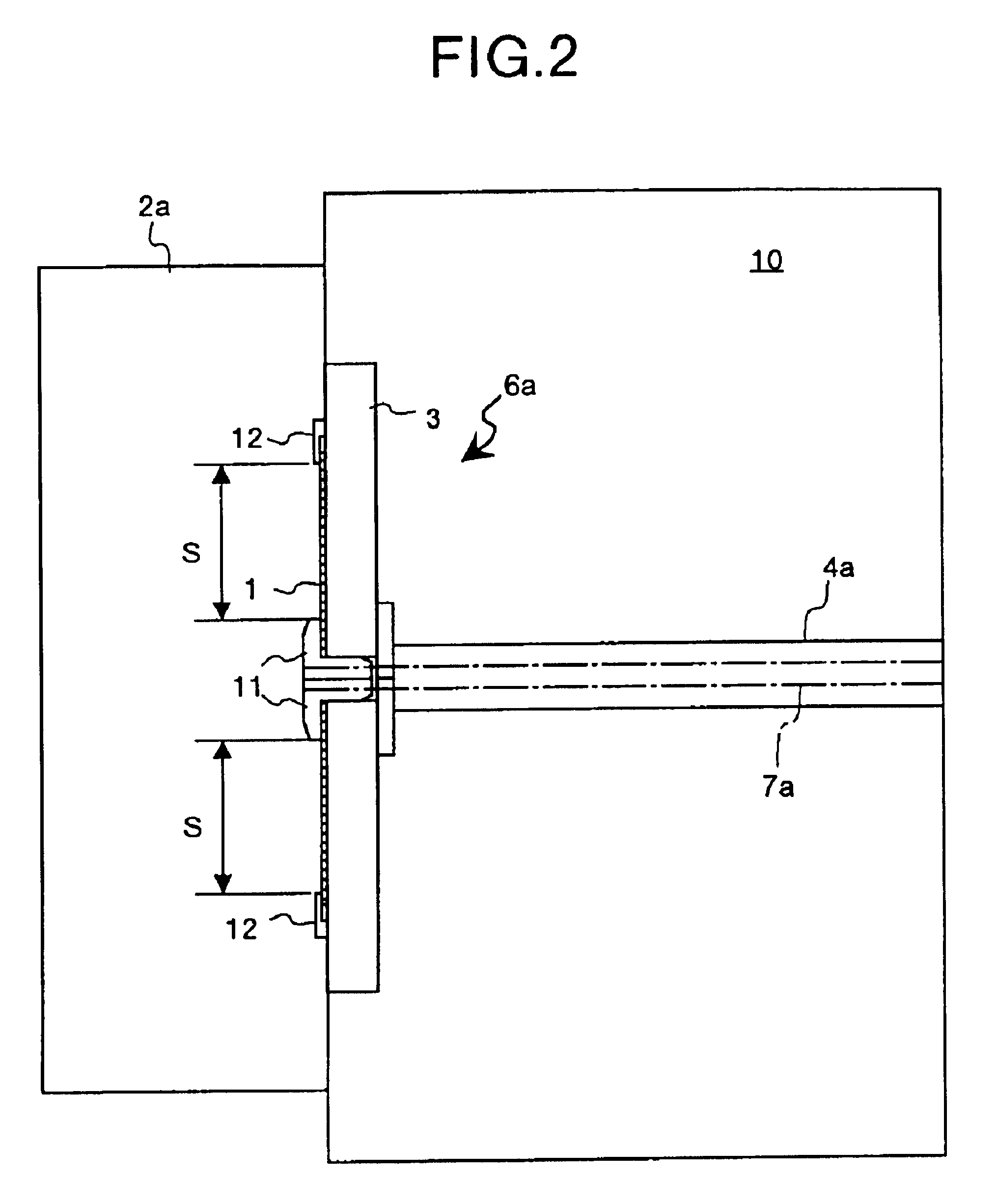Optical device substrate film-formation apparatus, optical disk substrate film-formation method, substrate holder manufacture method, substrate holder, optical disk and a phase-change recording type of optical disk
a technology of optical devices and substrates, applied in the field of optical disk manufacture technology, can solve the problems of increasing the number of conceivably defective products which do not meet the requirements, increasing the number of conceivably defective products, and increasing the number of problems
- Summary
- Abstract
- Description
- Claims
- Application Information
AI Technical Summary
Benefits of technology
Problems solved by technology
Method used
Image
Examples
example 1
[0171]Spherical copper particles each having a diameter of about 0.5 to 1 mm are molded to prepare the porous material 304 by loading a pressure thereon so that a void will be formed by 10 to 40 volumetric percent and also so that the molded member will place itself into a rectangular groove section 305 with the depth of 2.0 mm, width of 10 mm, and length of 30 mm formed on a plastic plane substrate set surface of the substrate holder 301. This porous member 304 is set in the groove section 305 so that a surface thereof is included in the same plane as the substrate set surface of the substrate holder 301. A polycarbonate substrate 302 for an optical disk with the size of 120 φ and thickness of 0.6 mm is set on the substrate holder 301 obtained as described above. The rectangular groove section 305 is positioned so that a length of an area contacting a rear surface of the substrate 302 is around 20 mm and a length of an area off from the substrate 302 is around 10 mm. A stainless-st...
example 2
[0173]Spherical copper particles each having a diameter of about 0.5 to 1 mm are molded to prepare the porous material 304 by loading a pressure thereon so that a void will be left by 10 to 40 volumetric percent and also so that the molded member will place itself into a rectangular groove section 305 with the depth of 1.5 mm, width of 10 mm, and length of 20 mm formed on a plastic plane substrate set surface of the substrate holder 301. This porous member 304 is set in the groove section 305 so that a surface thereof is included in the same plane as the substrate set surface of the substrate holder 301. Dimensions of the rectangular groove sections 305 are set in such a manner that, when the substrate holder 301 for an optical disk is set on the substrate holder 301, the groove section 305 is completely covered with the substrate 302. In addition, a rectangular through-hole 306 with the width of 5 mm and length of 10 mm is formed at a center of the groove section in the substrate h...
example 3
[0174]A small quantity of adhesive polymeric material with black lead powder mixed therein (For instance, an alkyl-based coating agent containing a carbon filler: Dotite XC12 produced by Fujikura Kasei) is coated on a surface of cupper particles or plastic particles each having a diameter of about 0.5 to 1 mm to form the porous member 304, and then testing is executed like in Examples 1 and 2 using the porous member 304 solidified to the same dimensions as those in Examples 1 and 2. A result of assessment of thermal deformation and performance thereof as an optical disk is excellent like in Example 1.
PUM
| Property | Measurement | Unit |
|---|---|---|
| Length | aaaaa | aaaaa |
| Length | aaaaa | aaaaa |
| Length | aaaaa | aaaaa |
Abstract
Description
Claims
Application Information
 Login to View More
Login to View More - Generate Ideas
- Intellectual Property
- Life Sciences
- Materials
- Tech Scout
- Unparalleled Data Quality
- Higher Quality Content
- 60% Fewer Hallucinations
Browse by: Latest US Patents, China's latest patents, Technical Efficacy Thesaurus, Application Domain, Technology Topic, Popular Technical Reports.
© 2025 PatSnap. All rights reserved.Legal|Privacy policy|Modern Slavery Act Transparency Statement|Sitemap|About US| Contact US: help@patsnap.com



